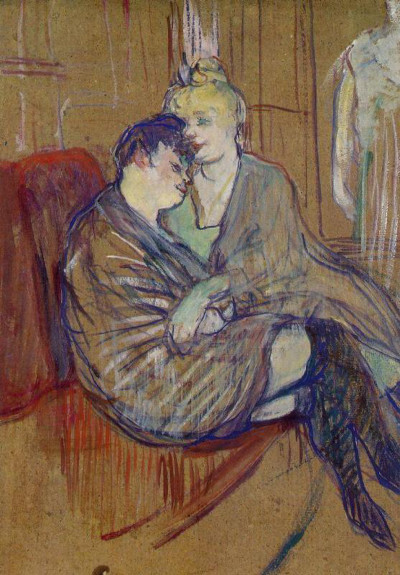The Two Girlfriends, or Les deux Amies, was a title given to several artworks by Henri de Toulouse-Lautrec. He would feature a female couple in a variety of scenarios, including in bed together, as well as out socialising.
The artist would often work on cardboard whilst out in cafes or bars and does so here. We find a strong bond on display between two happy friends, whose relationship can be expressed openly within this environment, even in the late 19th century. Toulouse-Lautrec himself loved places such as this where he also would be accepted and treated with love, when other parts of society would not be as welcoming. Paris at this time was an exciting, lively place where new ideas were appearing all the time. It was a true melting pot of innovation and progression, and many of its residents were open minded in comparison to other parts of Europe at that time. Toulouse-Lautrec liked to feature intimate moments of friendship, courtship and romance, with other examples including in bed the kiss and In The Restaurant La Mie.
Interestingly, this painting is believed to have been a preparation for another artwork titled, In the Salon of the Rue des Moulins. The two models have been identified, with Mireille being the dark haired lady. In the later piece, which was more complex, he chose to alter their relationship into more of a friendship but the emotional connection in this version is clearly quite different. The artist would often focus his attention on the figures, and reduce elements of the background to simple lines, where form is suggested at. In this case we find very loose work on the couch on which the two girlfriends sit, as well as the wall behind them.
This painting can today be found in the Musee Toulouse-Lautrec, Albi, France, with much of its collection having been gifted to the institution by the artist's mother who wanted to spread his legacy for future generations. It remains a popular desination for art fans, with understanding of his achievements still strong today, even a century after he had produced many of these items. Some of his other paintings have made it into prestigious galleries across the US and also his native France, meaning there is plenty of opportunity to see some of his work in person.




